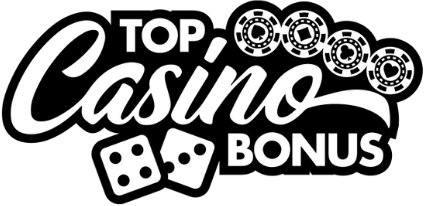Jacks or Better video poker strategy: maximizing your returns
Just like a well-played blues solo, Jacks or Better video poker flows with rhythm, nuance, and precision. Yet most folks plop down at the machine without a lick of strategy, hoping luck will bail them out. I’ve seen it too many times, players tossing away potential payouts like it’s Mardi Gras and they’re handing out beads. Let me set the record straight: maximizing returns in Jacks or Better isn’t about wild guesses. It’s about playing a methodical, numbers-driven game grounded in probability and discipline.
Table of contents
Understanding the backbone of jacks or better
Before we get into plays and patterns, I’ll tell you something many never grasp: Jacks or Better rewards patience and precision. Every hand has an optimal move based on mathematical expectation, not hunches, not vibes. The basic idea is simple: you’re trying to get the best five-card poker hand possible after a single draw, and the lowest-paying hand you can win with is a pair of Jacks.
It’s a variant of 5-card draw, but with rigid payout structures that break down exactly how much each result is worth. “Full pay” Jacks or Better (the only version worth your time) offers a 9/6 payout table: 9 coins for a full house, 6 for a flush. That math isn’t negotiable.
Why the paytable matters more than most think
The difference between an 8/5 or 9/6 table? Over time, it can cost you a small fortune. A 9/6 machine returns 99.54%, which, with proper play, cuts the house edge down to a gnat’s eyelash. Anything less, and you’re digging your own grave in nickel-sized scoops.
Hand selection: Discipline over desire
What separates seasoned video poker players from wide-eyed tourists is hand selection discipline. Take this to the bank: you don’t chase full houses when you’ve already got a high pair. That’s gambler’s fallacy meets fantasy football-level foolishness.
High pair versus four to a flush
This one trips up rookies like a banana peel in a slapstick sketch. Say you’re dealt Jack of hearts, 10 of hearts, 3 of hearts, 7 of hearts, and Jack of clubs. Most folks go wide-eyed at the four to a flush and dump the pair. Wrong move. The high pair gives a better expected value, about 0.825 versus 0.70 on the flush draw. That decimals margin? Over thousands of hands, it adds up.
Low pairs tempt greed but bleed bankrolls
If I had a dime for every player holding a low pair over a four-card straight or flush draw, I’d own a casino by now. You don’t hold deuces over four to a straight with open ends, open straight has a better EV. Know your chart, and don’t rely on guesses.
Mastering grinder strategy
Grinder strategy means playing long-term, not for the big jackpots, but for consistent, incremental value. You’re not aiming for the Royal every night; you’re siphoning out the small wins, one leak-tight hand at a time.
The role of bankroll management
A proper grinder doesn’t just manage cards, they manage coin. Your session bankroll should be at least 20–30 times your bet unit. Don’t play quarters with ten bucks in your pocket. That’s bringing a spoon to a swordfight.
Timing and pacing your sessions
Slot junkies pound buttons like it’s a speed contest. Wrong again. Proper pacing matters. If you play 600 hands per hour instead of 1,000, you’re less likely to burn out, both mentally and financially. Rhythm breeds intuition, not frenzy.
Optimizing for royal flush potential
Let me tell you a secret: the real edge in Jacks or Better comes from maximizing your chances at a Royal Flush. Rare, yes, but worth 800:1 on a five-coin bet. That’s your jackpot layer. But here’s the trick: don’t chase Royals unless the situation calls for it.
Holding suited high cards over high pairs
If you get four to a Royal, say King, Queen, Jack, and 10 of spades, and something like a low pair alongside it, keep the Royal draw. It’s the right move per expected value, about 18x higher than holding the pair. But only four, not three. Don’t get greedy on slim hopes.
Payment tools for serious players
You’re going to need robust and flexible Mastercard payment methods if you plan to keep your staking organized. I’ve used those for seamless top-ups and withdrawals. Just watch for fees, some banks treat deposits as cash advances.
If you’re playing Canada-side or want reliable domestic routing, Instadebit‘s clean and generally hassle-free. I’ve had maybe one hiccup in 12 years.
Still working across international borders or curious about alternatives? Entropay was a godsend back in the early days for virtual card funding. Limited now but still usable in some setups.
There’s also EcoCard/EcoPayz, solid for cross-operator consistency. Not my first choice, but dependable when others fall short.
Consistent practice over occasional brilliance
What most players forget is that poker machines don’t remember, they just calculate. There’s no “hot streak” or cosmic pattern. The only warmth you’ll get from the machine is from the heater underneath the coin tray.
You don’t become great at Jacks or Better in a single weekend. Commit the strategy chart to memory. Practice with free emulators. Document your sessions. Evaluate hands afterward. Look at edge cases.
Learning from close cousins
Want deeper insight into hand behavior and drawing odds? Study 5-card strategies like Omaha, where split pots and multi-draws make decision trees dizzying. Our in-depth breakdown of how to play Omaha reveals key structural leverage you can apply back to Jacks or Better, especially in drawing logic and positional discipline.
Final thoughts: precision trumps intuition
Too many folks walk into casinos thinking this is a gut game. It’s not. Jacks or Better rewards the diligent and punishes the impulsive. Think of it like a vintage car: treat it with respect, follow the manual, and it’ll run silently smooth. Misuse it, and it’ll leave you broken down on the side of the financial highway.
If you’re serious about maximizing returns, stop chasing myths and learn the true mechanics. Remember: the numbers never lie, but people always do, particularly to themselves. Play smart, play tight, and bank it like a pro.





0 Comments